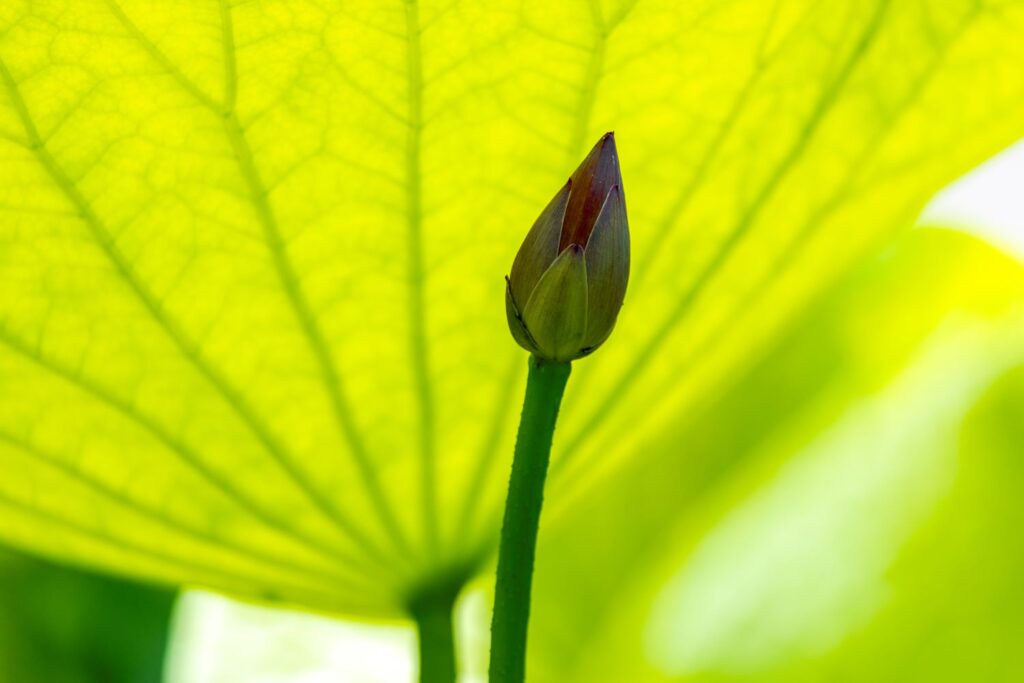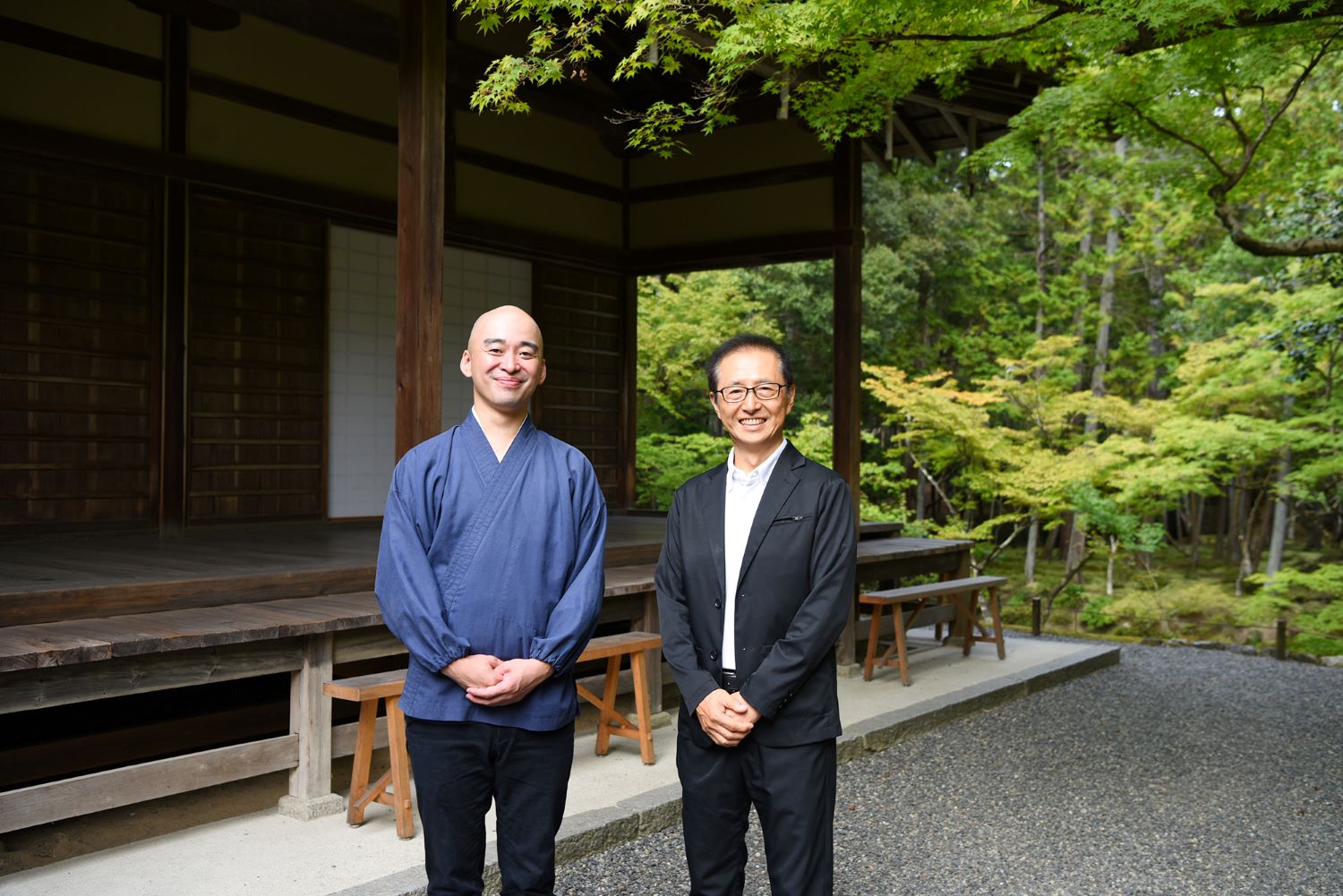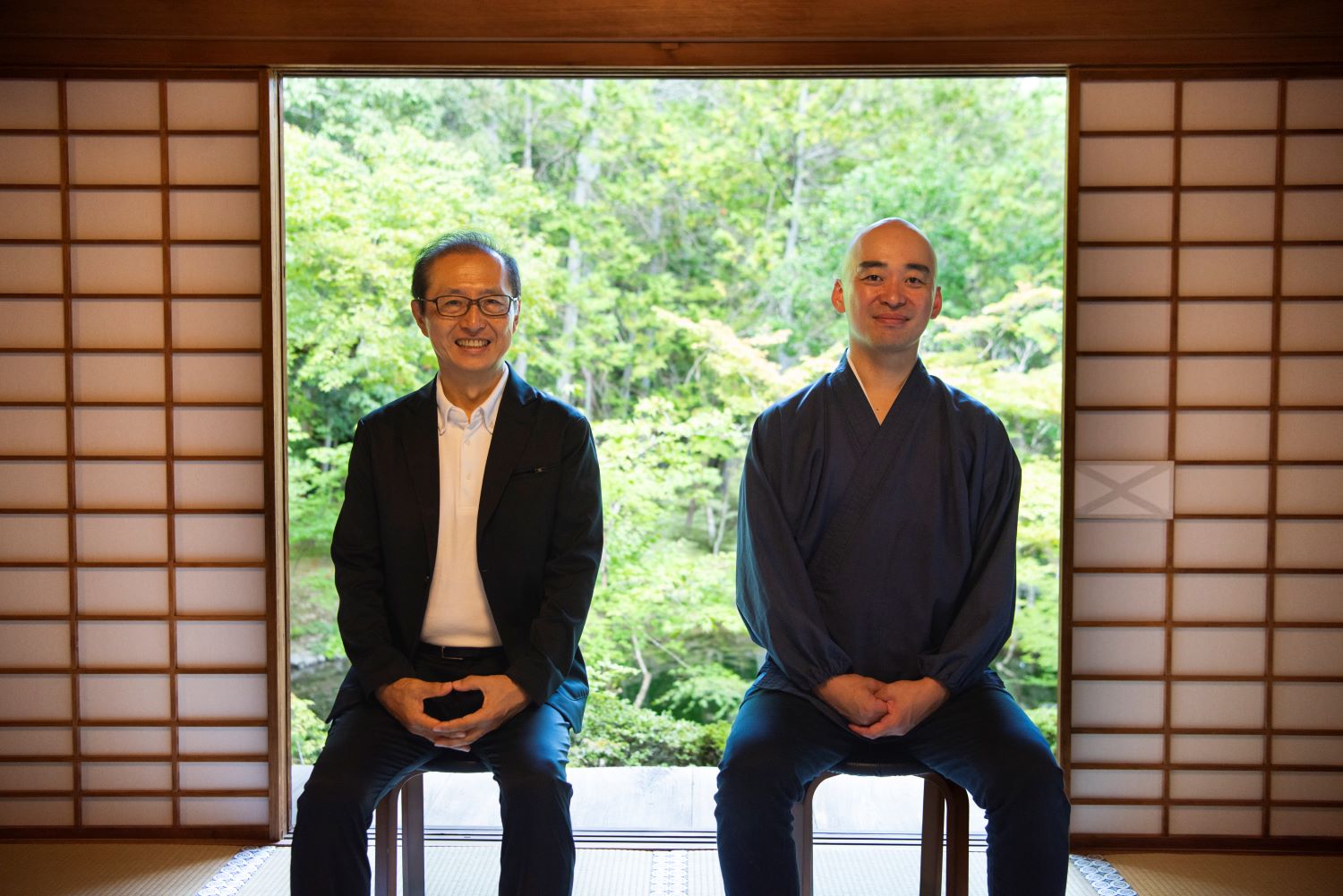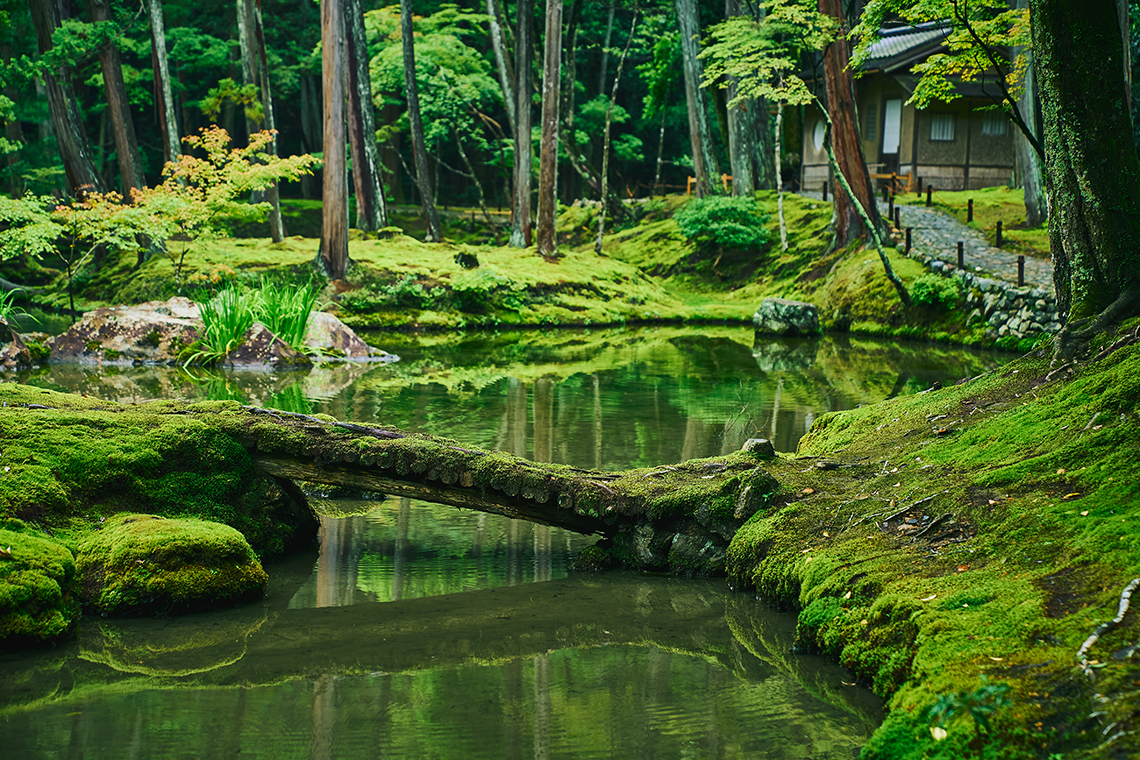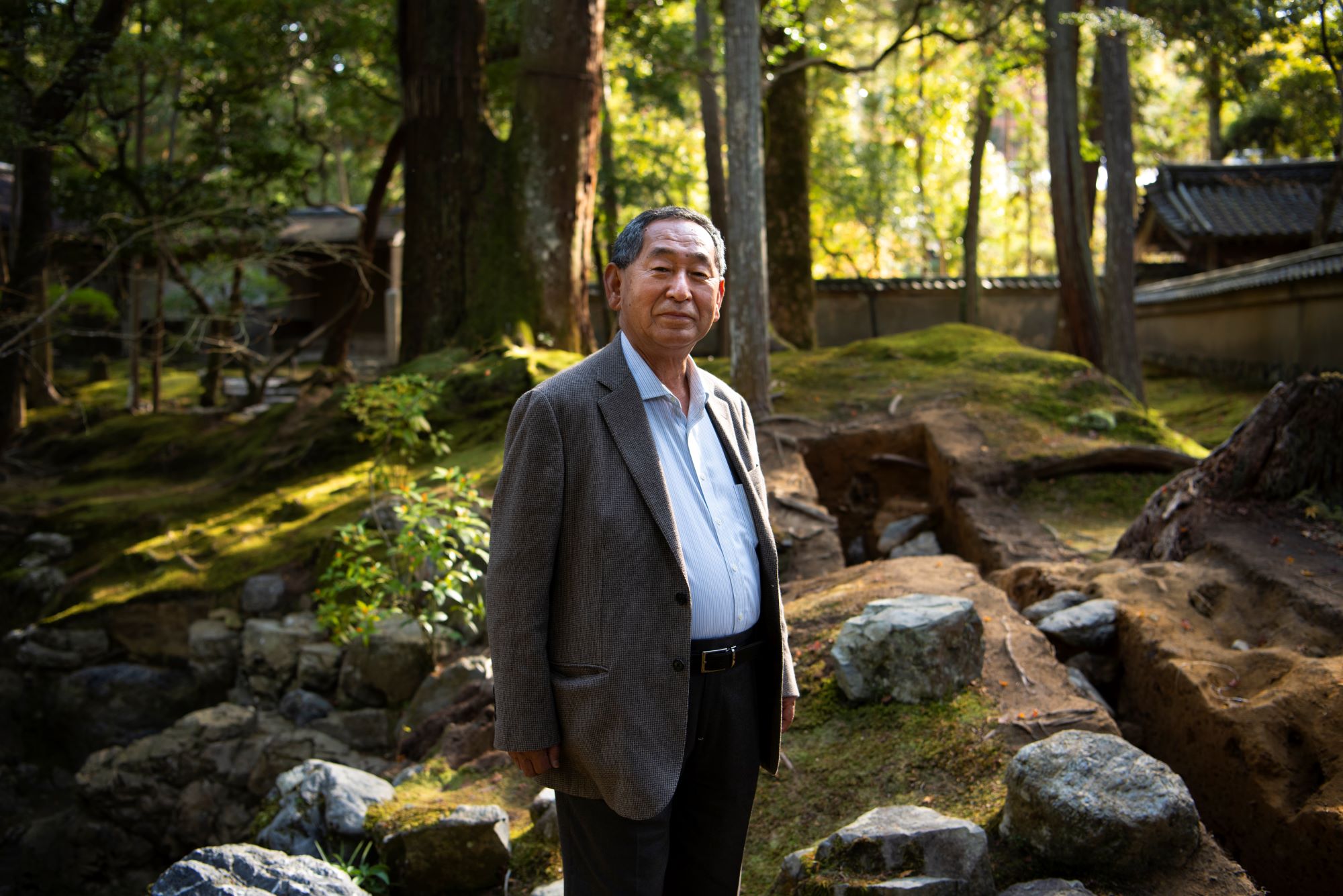2024.10.10
Five Seasons of Scenic Beauty chapter 4
Nakata Akira / Photographer
In most of the world there are four seasons, but here at Saihoji Temple, we count the rainy season as a separate season, so we have five seasons. Over the course of over one hundred visits, photographer Nakata Akira has captured the beauty of these five seasons at Saihoji. We hope you will enjoy the distinctively “Saihoji” moments immortalized in his work.
Bamboo Spring
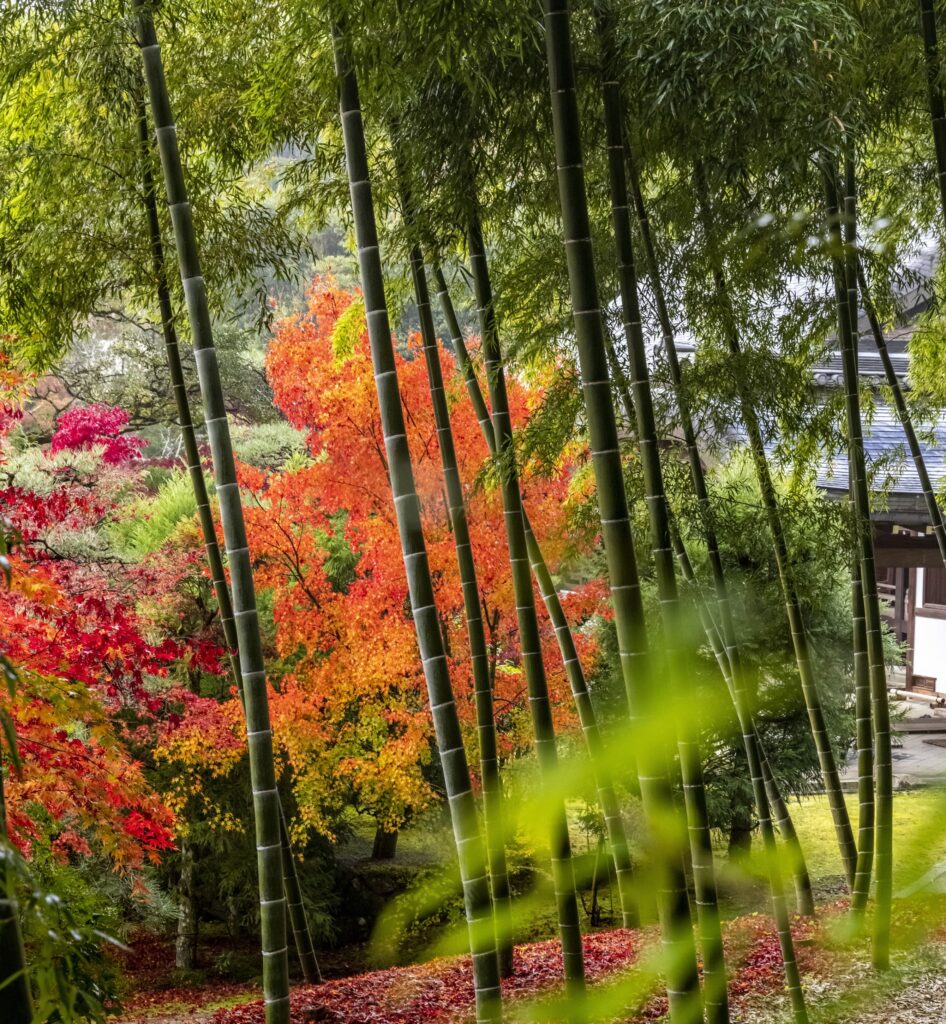
@Nakata Akira
Bamboo grows in clusters, with individual plants producing multiple shoots that grow into their own bamboo plants. In springtime, the branches of these “parent” bamboo plants turn yellow, having given up their nutrients to the new shoots. By early fall, however, the leaves have recovered, taking on a vibrant green hue, while the younger bamboo plants have also grown taller. For the bamboo plants, this is their springtime.
Bamboo brooms, an essential tool for tending to a moss garden, are made from materials cut from the temple’s bamboo grove in mid-September. A temple gardener Miyazaki Koji describes making such a broom: “We gather enough materials for the brooms to last us the whole year and wait for the right time to sweep the leaves. Rather than making the bamboo brooms from start to finish in a single sitting, I would recommend doing it bit by bit, such as on rainy days when I can’t sweep the gardens anyway. As I go about making the broom, I ask myself questions and find my own answers, eventually making an utterly unique broom customized to my own height and sweeping style. When I start using the broom, it starts to feel familiar to my hand and becomes a prized implement.”
When I photographed Mr. Miyazaki at work, it appeared as if he were gently stroking rather than sweeping the velvety surface of the moss. Carrying a broom, winnowing basket and hamper on his back, he moved nimbly from one spot to another, working with a lightness in his step like a monk undergoing his Buddhist training.
For Saihoji to remain the Moss Temple evermore
No matter what goes on outside the temple gates, the gardeners and staff at Saihoji continue to tend to the temple grounds and garden with an eye to the overall environment. They avoid the use of artificial materials as much as possible, instead using natural materials such as old-fashioned wooden stakes and hemp rope to demarcate the garden paths.
Upon entering the temple, visitors calm their minds by copying sutra in the main hall and then enter the garden. They spend a brief moment here, feeling the beauty of the five seasons and the spirit of Zen.
Nakata Akira
Born 1951 in Kyoto.
A member of the Japan Professional Photographers Society (J.P.S). He is a famous photographer of landscapes, gardens and festivals on the theme of “Kyoto culture”, and has published several books.
His main publications are
“SAIHOJI SHIN JYUKKYO” (Saihokai Association),
“Going through the Tale of Genji”, “Kyoto’s Festival Calendar” (Shogakukan),
“KYOTO IMPERIAL PALACE, OMIYA / SENTO IMPERIAL PALACE”,
“KATSURA IMPERIAL VILLA / SHUGAKUIN IMPERIAL VILLA”,
“Kyoto Gion Festival”,
“Kyo Shun Kan” (Kyoto Shimbun Publishing Center),“Japanese Gardens: Kyoto” (PIE INTERNATIONAL), and more
* Unauthorized quotation or reproduction of the text and photographs in this article is strictly prohibited.


